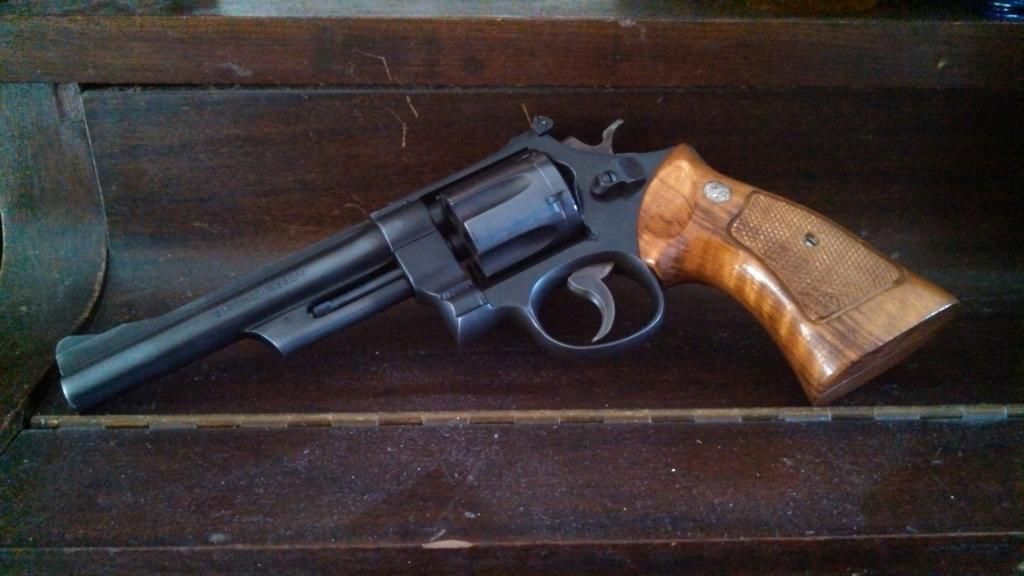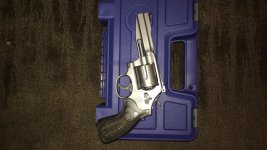SonOfScubaDiver
New member
So, I have a couple of questions about S&W's 686. So far I have only looked at videos of this gun, and I'd like to get one. I just haven't had the time to look at one in person yet. I would really like to have a shootable 357 Magnum. A few months ago I purchased an SP101 with a 3 inch barrel. It's a great gun, and I love it. However, even after switching out the factory grip for Hogue grips, I have trouble shooting 357 Magnum loads out of it. The gun can definitely handle 357. That isn't the problem. The problem is that I can't shoot more than 10 or 15 rounds of 357 without it really hurting my hand. Because it's designed to mainly be a carry piece, there aren't many choices for grips to better handle the recoil of the 357. Well, at least not that I can find.
So, I've been looking into getting a larger framed 357. I don't plan on using it to carry very often, but maybe every now and then. I really like the looks of the 686, but I don't know how much bigger it is than the SP101. Do any of you happen to own both and have a side by side picture of them that shows the difference in size?
Also, is the 686 comfortable enough to shoot a hundred or so 357 magnum rounds through it at a time? I can't afford to do it all the time, but I'd really like to be able to take a 357 to the range and really give it a good workout every now and then.
I don't have much fun shooting the 357 cartridge through my SP101, which kinda defeats the purpose of having one for me. Of course, I can shoot 38 special target loads with no difficulty whatsoever, and have no problems with the 38 special +P rounds either, but I like the +P much better. It seems to me that the SP101 is really more of a really good 38+P gun than a good 357 Magnum, but that's just my opinion.
So, I've been looking into getting a larger framed 357. I don't plan on using it to carry very often, but maybe every now and then. I really like the looks of the 686, but I don't know how much bigger it is than the SP101. Do any of you happen to own both and have a side by side picture of them that shows the difference in size?
Also, is the 686 comfortable enough to shoot a hundred or so 357 magnum rounds through it at a time? I can't afford to do it all the time, but I'd really like to be able to take a 357 to the range and really give it a good workout every now and then.
I don't have much fun shooting the 357 cartridge through my SP101, which kinda defeats the purpose of having one for me. Of course, I can shoot 38 special target loads with no difficulty whatsoever, and have no problems with the 38 special +P rounds either, but I like the +P much better. It seems to me that the SP101 is really more of a really good 38+P gun than a good 357 Magnum, but that's just my opinion.


